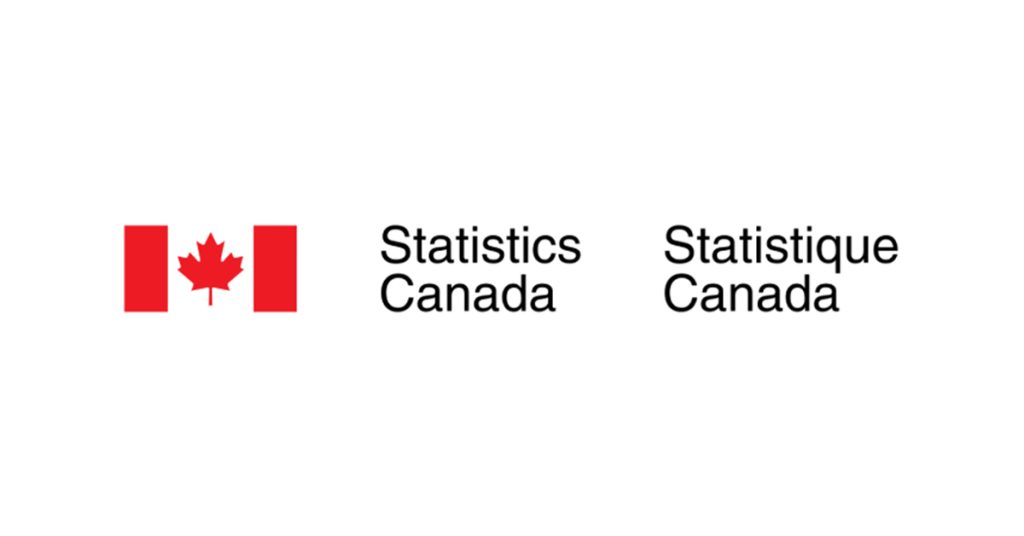Gross Domestic Product by Industry, June 2025

September 3, 2025
After recording declines in April and May, real gross domestic product (GDP) edged down 0.1% in June, driven by declines in goods-producing industries in all three months. This was the first occurrence of three consecutive monthly declines since the last three months of 2022.
Chart 1
Real gross domestic product edges down in June for the third consecutive month

The goods-producing industries contracted 0.5% in June 2025, driven by declines in the manufacturing and utilities sectors. The services-producing industries edged up 0.1%, driven by increases in retail trade, real estate and rental and leasing and wholesale trade. Declines in the public sector and most other sectors comprising the aggregate tempered the increase. Overall, 11 of 20 industrial sectors contracted in June.
The manufacturing sector records a third decline in four months
The manufacturing sector declined 1.5% in June, as two-fifths of manufacturers reported being impacted by tariffs. Both durable and non-durable goods manufacturing industries contracted in June.
Chart 2
Manufacturing sector is down in June

Durable goods manufacturing industries dropped 2.1% in June, down for the second time in three months, as 7 of 10 subsectors contracted. Transportation equipment manufacturing (-4.4%) contributed the most to the drop, as most industries comprising the subsector were down in the month. Declines in motor vehicle (-12.6%) and motor vehicle parts manufacturing (-2.7%) coincided with lower exports of passenger cars and light trucks. These declines reflected in part the impact of the imposition of tariffs by the United States on several goods imported from Canada. Wood product manufacturing (-4.3%), primary metals manufacturing (-1.6%) and machinery manufacturing (-1.3%) further added to the decline.
Non-durable goods manufacturing industries contracted 0.7% in June, as five of nine subsectors decreased. Chemical manufacturing (-10.4%) contributed the most to the decline, with a 20.7% contraction in pharmaceutical and medicine manufacturing. The increase in petroleum and coal product manufacturing (+11.0%) tempered some of the declines in the month, as several petroleum refineries resumed production following maintenance and retooling activities in May.
Utilities sector down on lower activity in electric power generation, transmission and distribution
The utilities sector was down 1.2% in June, representing a fourth consecutive monthly decline. Electric power generation, transmission and distribution (-1.9%) accounted for all of the decline in the month, as worsening drought conditions hampered hydroelectric power generation.
The transportation and warehousing sector down in June
Transportation and warehousing dropped 0.3% in June, following a 0.6% growth in May, as most subsectors contracted in the month.
Chart 3
Rail transportation contracts in June, largely offsetting the expansion seen in the preceding month

Rail transportation contracted 2.3% in June, following a 3.1% expansion in May. Metal and mineral carloadings contributed the most to the decline in June, led by a decline in loadings of iron ores and concentrates, which coincided with falling exports of these products. Automotive carloadings also fell for the third consecutive month in June, coinciding with a decline in activity in motor vehicle and parts manufacturing and exports of motor vehicles and motor vehicle parts.
Pipeline transportation declined 1.1% in June, the fourth contraction in five months. The decline in June was driven by a fall in crude oil and other pipeline transportation (-2.0%) and pipeline transportation of natural gas (-0.2%), coinciding with lower exports of crude oil, bitumen and natural gas.
Broad-based growth across retail trade industries leads to a rebound in the sector
The retail trade sector rose 1.4% in June, more than offsetting the 1.3% contraction recorded in May, as 10 of 12 subsectors grew in June.
Chart 4
Retail trade sector expands in June and reaches record high

Higher retailing activity at food and beverage stores (+2.4%) led the increase in June, with all store types expanding, following three consecutive monthly declines. Clothing and clothing accessories stores (+3.4%) and building material and garden equipment and supplies dealers (+2.4%) further contributed to the sector’s growth. Meanwhile, lower retailing activity at non-store retailers (-2.1%) and furniture and home furnishing stores (-0.9%) tempered the increase.
Wholesale trade sector up on widespread increases
The wholesale trade sector (+0.5%) was up for the second consecutive month in June, as eight of nine subsectors expanded. The back-to-back increases in May and June partially offset the declines recorded in the two previous months, with the activity level in June standing 1.9% below the February level. Food, beverage and tobacco wholesalers (+1.2%) led the growth in June, mainly on the strength of food products wholesaling. Miscellaneous wholesalers (+1.4%) further contributed to growth in June, rising for the second month in a row. Only motor vehicle and parts wholesalers (-1.3%) contracted in June, posting its third decline in five months.
Real estate and rental and leasing reaches a record high in June
Real estate and rental and leasing (+0.3%) grew for the third consecutive month in June, as all subsectors expanded. Higher activity at the offices of real estate agents and brokers and activities related to real estate (+3.1%) led the overall growth in the sector. This was the third consecutive monthly increase in the industry group and reflected rising home resale activity across the country, particularly in the Greater Toronto Area. Legal services, which derives much of its operations from real estate transactions, rose 0.2% in June.
Construction continues to grow in June
The construction sector rose 0.3% in June, growing for the third time in four months.
Residential building construction (+1.6%) led the growth in June, driven by increased activity in the new construction of single-detached homes as well as in home alterations and improvements. Repair construction (+0.3%) also contributed to the increase in June, rising for the second consecutive month.
Non-residential building construction (-1.0%) tempered the increase in the sector in June, as most forms of non-residential building construction were down. Engineering and other construction activities (-0.4%) posted a second consecutive monthly decline in June.
Mining, quarrying, and oil and gas extraction sector edges up
The mining, quarrying, and oil and gas extraction sector edged up 0.1% in June, following two consecutive monthly declines. An increase in the oil and gas extraction subsector in June was partially offset by contractions in the support activities for mining, and oil and gas extraction subsector as well as in the mining and quarrying (except oil and gas) subsector.
The oil and gas extraction subsector (+2.6%) rebounded in June, following two consecutive monthly declines. Oil sands extraction sharply increased by 6.4% in June. This represented its largest monthly growth rate since December 2020 and more than offset the declines recorded in April and May 2025, as several oil extraction facilities ramped up production following maintenance and wildfires disruptions around some facilities in May. Meanwhile, oil and gas extraction (except oil sands) (-1.0%) tempered the growth in the subsector in June, reflecting lower extractions of natural gas and crude petroleum.
Support activities for mining and oil and gas extraction were down 9.7% in June following five months of growth, driven by lower rigging and drilling activities and marking the largest decline since June 2020.
Chart 5
Main industrial sectors’ contribution to the percent change in gross domestic product in June

Advance estimate for real gross domestic product by industry for July 2025
Advance information indicates that real GDP increased 0.1% in July. Increases in real estate and rental and leasing, mining and quarrying (except oil and gas) and wholesale trade were partially offset by a decrease in retail trade. Owing to its preliminary nature, this estimate will be updated on September 26, 2025, with the release of the official GDP by industry data for July.
Real gross domestic product by industry down in the second quarter
Real GDP by industry declined 0.2% in the second quarter, partially offsetting a 0.4% increase in the previous quarter. This is the first decrease since the fourth quarter of 2022.
Goods-producing industries contracted 1.2% in the second quarter of 2025, as all sectors, except for construction (+0.2%), were down. Services-producing industries (+0.2%) tempered the overall decline, increasing for the 20th consecutive quarter. Overall, 9 of 20 industrial sectors decreased in the second quarter.
The manufacturing sector (-2.1%) contributed the most to the decline in the second quarter, down for the sixth time in eight quarters and registering its largest quarterly decrease since the second quarter of 2020. Durable goods manufacturing decreased 2.1% in the second quarter of 2025, down for the seventh time in nine quarters. Wood product (-5.5%), primary metal (-4.4%) and transportation equipment (-1.9%) manufacturing were the largest contributors to the decline and coincided with declines in exports in the second quarter.
Non-durable goods manufacturing (-2.1%) was down for the third consecutive quarter in the second quarter, with petroleum and coal product manufacturing (-8.0%) contributing the most to the aggregate decline, as many refineries and other petroleum products producers undertook turnaround and maintenance throughout the quarter.
Wholesale trade dropped 1.9% in the second quarter, as most subsectors decreased. Machinery, equipment and supplies wholesalers (-2.9%) was the largest contributor to the movement for the fourth consecutive quarter. Building material and supplies wholesalers (-2.4%), personal and household goods wholesalers (-2.1%) and motor vehicle and parts wholesalers (-2.2%) further contributed to the sector’s contraction in the second quarter.
The utilities sector decreased 3.5% in the second quarter, as all the sector industries were down, more than offsetting the previous quarter’s increase (+3.5%). Electric power generation, transmission and distribution (-3.7%) accounted for most of the decline in the second quarter, and natural gas distribution (-3.9%) further contributed to the decrease.
Mining, quarrying, and oil and gas extraction was down 0.9% in the second quarter after four consecutive quarterly increases. Oil and gas extraction led the sector’s movement for the third consecutive quarter, posting a decrease of 1.4% in the second quarter as wildfires and maintenance contributed to the decline. Mining except oil and gas extraction decreased 1.5% in the second quarter, down for the second consecutive quarter.
Finance and insurance expanded 0.9% in the second quarter, posting its seventh quarterly increase. Financial investment services, funds and other financial vehicles led the growth, expanding 3.7% in the second quarter. The announcement of US tariffs on April 2 and the subsequent 90-day pause on April 9 contributed to the unusually high activity in the Canadian equity market at the beginning of the second quarter.
The public sector aggregate (comprising educational services, health care and social assistance, and public administration) expanded 0.5% in the second quarter. Public administration (+0.8%) was one of the largest contributors to this growth, in large part stemming from higher activity in the federal government associated with the Canadian federal election in April. The health care and social assistance sector rose 0.5% in the second quarter, with broad-based increases being recorded across all subsectors.
Retail trade (+0.8%) expanded for the fifth consecutive quarter in the second quarter, as 9 of its 12 industries increased. Building material and garden equipment and supplies dealers (+4.4%), sporting goods, hobby, book, and music stores (+10.8%), motor vehicle and parts dealers (+0.9%) and clothing and clothing accessories stores (+1.6%) were the largest contributors to the sector increase.
Chart 6
Main industrial sectors’ contribution to the percent change in gross domestic product in the second quarter












